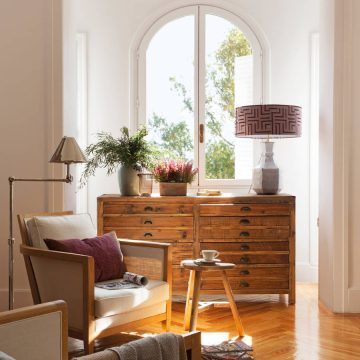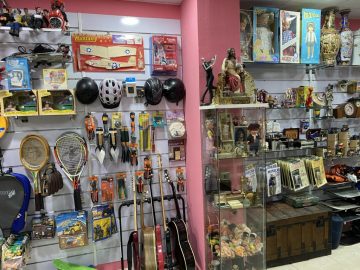
Bargain hunting guide: how to find decorative jewelry at flea markets and make the most of it
In this complete guide, we tell you where and how to buy antiques, vintage furniture and second-hand pieces to decorate your home and give it style and personality. Here’s everything you need to keep in mind
THE SWEET CHARM OF VINTAGE FURNITURE
Today, the terms antique, vintage, auction, second hand or antique furniture are used interchangeably. The attraction to a piece does not depend on whether it is one thing or another, and in the current reigning eclecticism they can all coexist in harmony. However, there are differences between them.
Vintage. It refers to furniture, lamps and objects that were produced during the 20th century, already linked to the design industry, with certain distinctive features. If the fifties marked a functional aesthetic and brought Nordic organicism, the sixties reflect the burst of color and voluptuous contours of pop, while the seventies stand out for the boom of sophisticated Italian design. It also includes pieces from workshops and industries of those periods.
Antique dealers. For its part, the respected antique furniture must have been around for a century, and is ruled by styles: neoclassical, baroque, modernist, deco or royalty names of each period. Forty-year-old furniture has traditionally been called “brocanter” or “brocanter”. It also includes the rustic universe.
Second hand and sustainability. The slogan of the 3/4 R’s (reduce, reuse, recycle, repair) or the circular economy are heirs to a very old way of doing things: making the most of the material objects produced. Concepts that relaunch second-hand markets, not only from the pure trend or aesthetic preferences, but from the awareness of sustainability.
HOW TO CHECK A PIECE OF FURNITURE?
Although at first glance some furniture appears to be in good condition, it is always advisable to make some checks to avoid surprises.
Legs. In armchairs and sofas, verify the solidity of the union of the legs with the base of the upholstered seat and that they do not twist. On chairs and tables check that the structure does not dance with a little wiggle. If there is only one disengagement, it can be glued.
Containers. Check the legs of large cabinets. Due to their weight, they are sometimes damaged when they are moved. On chests of drawers and dressers, check that the drawers do not jam. Otherwise, they will require a rebate.
Hardware. Brass or gold-plated. If the furniture has handles or keyholes, make sure they are not missing; finding a matching piece may be difficult.
How and when to repair a piece of furniture or antique item
Always consult a professional before touching the part in question. Broadly speaking, these are the most frequent situations you may face when repairing or restoring furniture.
Woodworm. It is essential to treat it thoroughly if the furniture has the characteristic pinholes, before it comes into contact with other furniture in the house. You will avoid contagions.
Veneered furniture. Rosewood and walnut are typical of art deco. Pay attention to the grain if it has to be replaced due to breakage. The curved sheet can be corrected with plate.
Antique dealer. Its restoration should be carried out by a specialist. It usually has a high cost. And a bad intervention can devalue its value in the market.
Reupholster. To upholster a chair, sofa or armchair, keep in mind that springs and springs are attached to jute tapes and covered with burlap. The vegetable fiber of the padding is laid out and protected with cotton canvas fixed to the structure. After the stapling comes the metal studs, trimmings or piping.


